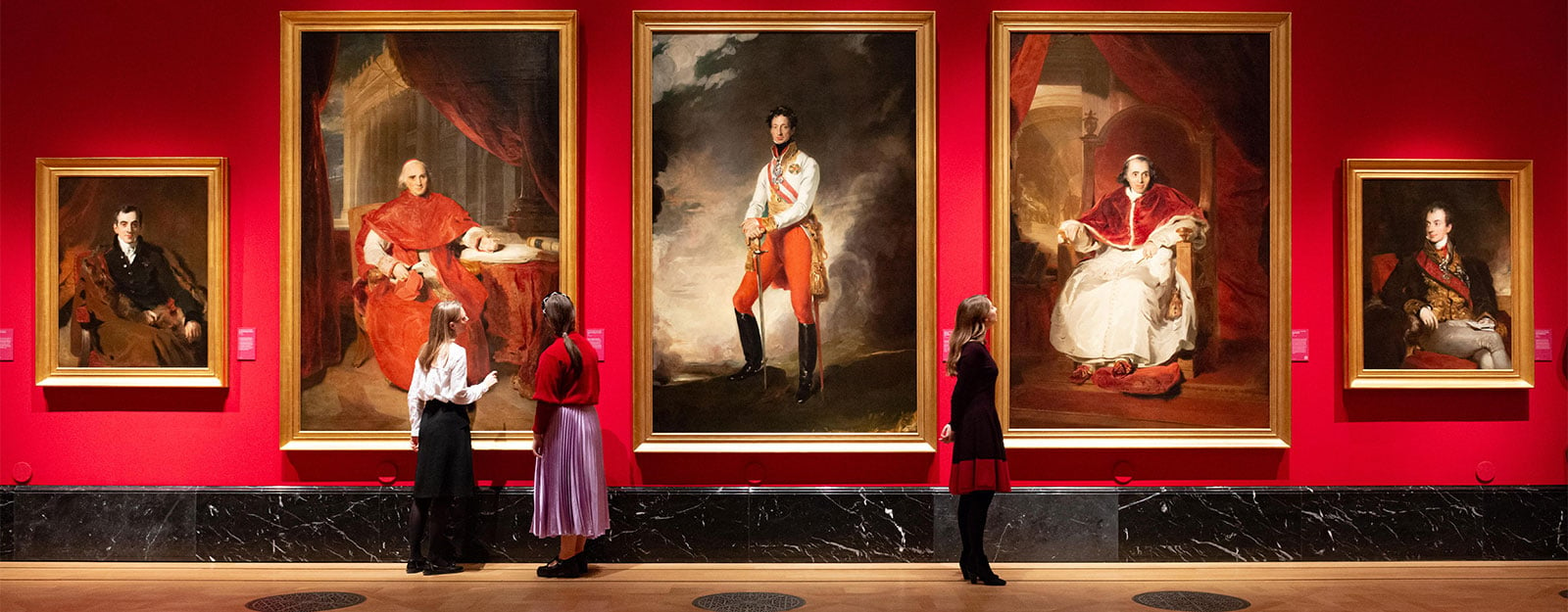
About the Collection
Learn more about the Royal Collection, one of the most important art collections in the world.
Georgian Papers
George III Papers (Including George I & George II)
George III’s papers form the earliest surviving collection of a reigning monarch’s papers stored in the Royal Archives. They were discovered at Apsley House, the London residence of the Dukes of Wellington, along with the papers of George IV, and were deposited in the Royal Archives in 1912. A significant amount of George III's papers, along with those of George IV and William IV, can be viewed in the catalogue Georgian Papers Online.
George III was a diligent man who meticulously made copies of his correspondence until his first illness in 1788. He thereafter continued to file letters until the deterioration of his eyesight necessitated the appointment of a Private Secretary in 1805. The papers provide a remarkable insight into the life and interests of the King from 1753 until the onset of his final illness in 1810.
The collection comprises three main series: his official correspondence dating from 1753 to 1810, his private papers from 1755 to 1810, and his correspondence with his siblings and children. The Royal Archives also contains many academic essays written by the King, and includes examples of his correspondence with notable cultural figures of the eighteenth century, such as William Herschel and Sir Joseph Banks, as well as material highlighting the King’s interest in the development of the Royal Academy of Arts from its foundation in 1768.
The papers of George III also include small numbers of papers of his siblings, as well as some of the papers of his father, Frederick, Prince of Wales, his grandfather, George II and greatgrandfather, George I.
George IV Papers
Much of the private correspondence of George IV was destroyed following his death in 1830. Fortunately, the King’s chief executor, Arthur Wellesley, 1st Duke of Wellington, kept the remaining papers under his care. These were deposited in the Royal Archives following their rediscovery at Apsley House.
Like the papers of George III, George IV’s records are organised into three main series: his official papers dating from 1811 to 1830, his papers as Prince of Wales, and his correspondence with other members of the Royal Family. This correspondence provides an interesting insight into the lives and personalities of the children of George III.
Perhaps the most informative of George IV’s papers are his account books and bills. These detail his acquisitions of decorative arts, books and paintings to furnish and decorate his various residences during his time as Prince of Wales, Prince Regent, and King.
Other papers relating to George IV in the Royal Archives include some material relating to the King’s relationship with Mrs FitzHerbert, including their marriage certificate, presented to King Edward VII in 1905.
‘Additional’ & ‘Boxes’ Papers
Among the papers of George III and George IV are some which were acquired at different times and therefore are not included in the main series.
There are over 90 such groups of papers, and they fall into three broad categories: the papers relating to members of the Royal Family, papers of some individuals close to the Royal Family and notable figures of the period (such as Lady Charlotte Finch, Nathaniel Kent and Joseph Farington), and miscellaneous papers including inventories and account books.
Further material, primarily including Privy Purse papers and bills and a substantial body of papers relating to the separation and divorce of George IV and Queen Caroline are also found among these series.
William IV
William IV’s official papers were consciously destroyed following his death in 1837, much against the wishes of Queen Victoria. However, the Royal Archives holds a surprising number of papers relating to the King.
The main series of papers comprises a small group of personal papers and military documents, 1830–33, papers relating to the Office of Robes during his reign (including financial accounts), one volume of Privy Purse accounts, a small account book from 1793 and a substantial body of correspondence from 1779 to 1834, conducted largely with
George IV, Alexander Whitehead and others.
There is also additional material relating to William IV in the Royal Archives. This includes correspondence between the King and Charles Grey, 2nd Earl Grey while the latter was serving in political office, including during his time as Prime Minister between 1830 and 1834 (see also Melbourne and Howick Papers, below); the Munster papers (the papers of George FitzClarence, 1st Earl of Munster, illegitimate son of William IV and Dorothea Jordan) and a letter book of correspondence with his father, George III, other members of the Royal Family, and various courtiers.
Further papers include a substantial series of the correspondence of Dorothea Jordan and the Hoste papers, which contain some correspondence of the King during his naval career.
Melbourne & Howick Papers
The Melbourne Papers and the Howick Papers, both of which were presented to The Queen, comprise the ministerial correspondence of Lord Melbourne (Prime Minister 1835–41) and Charles Grey, 2nd Earl Grey (Prime Minister 1830–34). These papers contain much information on the passage of significant legislation such as the Great Reform Act of 1832, as well as documenting the rapid social changes and the political climate of the 1830s.







